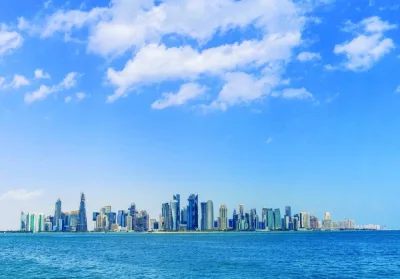The uproar over President Donald Trump’s travel ban has thrown the plight of immigrants into stark relief, but it also has engulfed skilled foreign workers.
In dramatic scenes over the past three weeks, outraged demonstrators flocked to airports to support refugees and migrants trapped there or unable to board flights to the US.
Major US tech companies that are highly dependent on foreign talent said hundreds of their employees could be affected, and joined in the opposition to the immigration limits, which initially swept up legal residents as well.
But Trump and his team have long expressed goals that extend far beyond Silicon Valley, signalling they planned to establish a general preference for US workers over migrant job seekers in their “America First” economic policy.
Since taking office, Trump has announced the ambitious goals of creating 25mn new jobs over the next 10 years and pushing economic growth to a torrid 4%, double the current rate. However those goals will be difficult if not impossible to achieve without either delaying retirement for many older workers, admitting significant numbers of immigrants into the US, or both.
Some Trump advisers and associates have sought to frame the question of immigration as a fundamental contest over the nature of American society. Chief White House adviser Stephen Bannon said in 2015 that the presence of Asians in Silicon Valley could undermine “civic society” – views that have been hailed by the extreme right.
But Trump publicly has stuck to national security and economic arguments. He pledged not only to prevent employers from outsourcing “cheap labour” by using the H-1B visa programme for skilled workers, but also to “institute an absolute requirement to hire American workers first for every visa and immigration programme.”
And in his inaugural address, he declared the country should protect itself from foreign countries seeking to “destroy our jobs.”
But under current economic and demographic trends, Trump’s goal of doubling economic growth and adding 25mn jobs by 2027 is incompatible with a clampdown on immigrants. During the 1990s, immigrants resulted in a significant increase in per capita economic growth through innovation. Amid an overall surge in patent registrations between 1990 and 2000, immigrants accounted for one third of new patents.
According to Ian Shepherdson, chief economist at Pantheon Macroeconomics, Trump’s goals are “wildly implausible” given the current size of the US labour force. “There’s just not the labour supply there to do it,” he said, noting that employers already are finding it increasingly hard to fill vacancies, especially if Trump goes ahead with a massive infrastructure plan.
Demographics also are playing a role through the ageing of the US workforce. Ben Zipperer of the Economic Policy Institute agreed that increasing immigration is one of the only ways of meeting Trump’s job creation goal, since about one in four Americans is expected to be 65 or older in the next 10 years.
The US would still fall short of Trump’s goal by about 9mn jobs even if each of five broad age groups matched their record employment levels from the last 50 years. The current foreign-born labour force coincidentally numbers about 25mn people – a sizeable part the economy. Efforts to reduce that and change the trend in negative ways are almost certainly going to shrink the workforce.
Nevertheless, Trump has shown no sign of increasing immigration to meet the demand.

viewpoint


